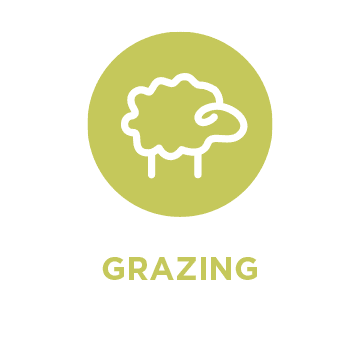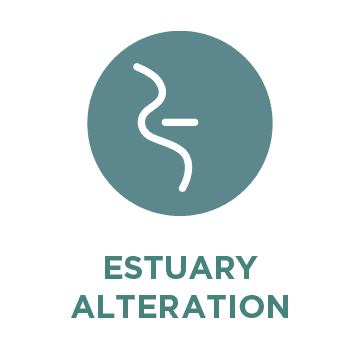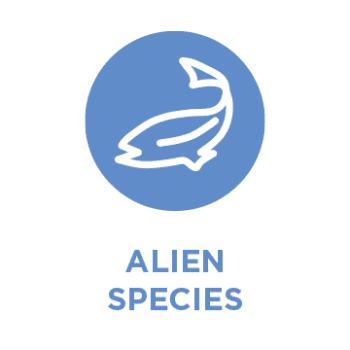How we're working to save them:
- Work with stakeholders to find a water sharing balance, which has been disrupted by Scott and Van Arsdale dams on the Eel River and Coyote Valley Dam on the Russian River, to recover CC Chinook.
- Mark all hatchery Chinook salmon in the ESU range and implement a Genetic Stock Identification program to determine the origins of harvested salmon.
- Implement an extensive monitoring program for the Eel River to evaluate restoration activities and adaptively assess salmonid recovery.
- Leverage partnerships with public and private landowners, law enforcement, legal precedent, and voluntary efforts to reduce illegal water diversions and secure streamflows for all salmonids.
Where to find California Coast Chinook Salmon:
California Coast Chinook Salmon Distribution
The CC Chinook ESU includes salmon that spawn in coastal watersheds from Redwood Creek (Humboldt County) to the Russian River (Sonoma County). In general, small coastal streams within this range can support CC Chinook salmon as long as they have open estuaries during peak migration times (fall through spring). In the Eel River watershed, CC Chinook salmon could historically access habitat up to natural boulder roughs on the upper mainstem Eel River, but they are currently blocked from accessing this habitat by Scott Dam and Lake Pillsbury (Lake County).
How they California Coast Chinook Salmon Scored:
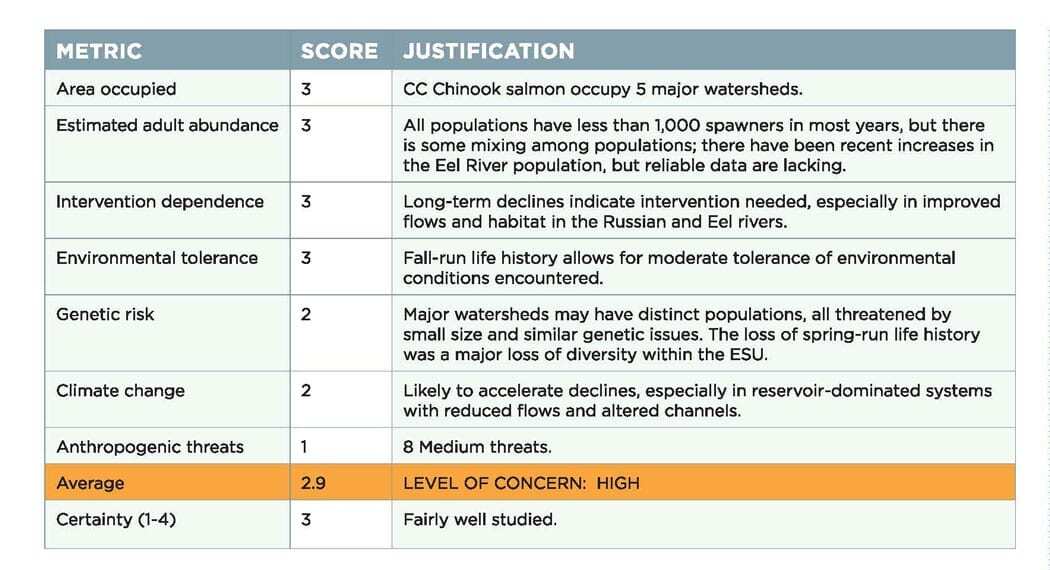
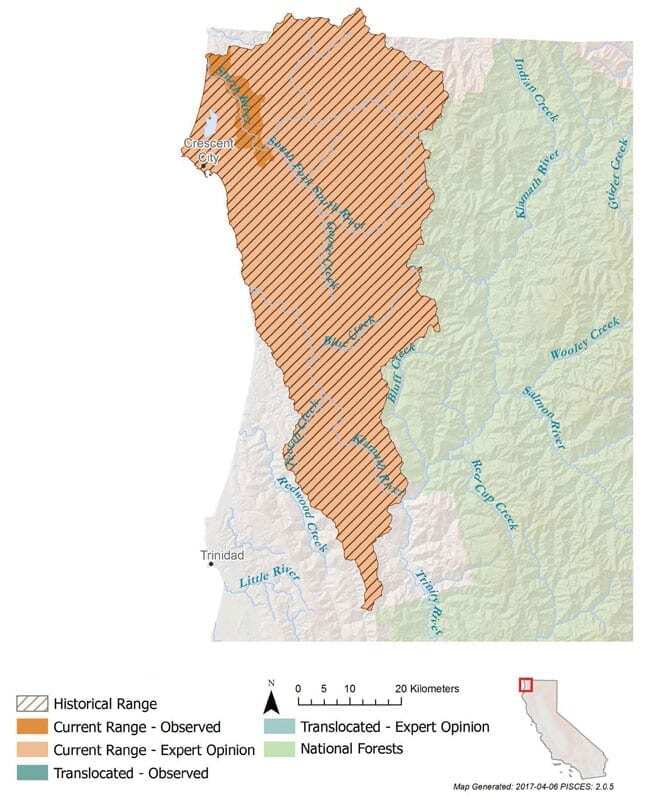
Characteristics
CC Chinook salmon can be distinguished from other salmon species by heavy spotting on their tails and black coloration inside their lower jaw and at the base of their teeth. CC Chinook salmon are nearly identical in appearance to other Chinook salmon and are separated from other Chinook based on their geographic distribution and genetic differences. CC Chinook salmon in the Eel River average around 56 cm (22 in.) in length.
Abundance
An abundance of CC Chinook salmon has likely decreased by more than 90% from historical numbers, though reliable estimates are lacking, especially for the Eel River watershed. The Eel River once supported a cannery with catches over 500,000 Chinook and Coho combined per year in the late 19th century. In ‘good’ years, historic runs were on the order of 600,000 fish combined in the ESU, perhaps dropping to 30,000-50,000 in ‘bad’ years. Present numbers total approximately 5,000-20,000 fish each year.
Habitat & Behavior
CC Chinook are all fall–run salmon; the spring- run life history has been lost throughout the ESU. CC Chinook typically return to their natal rivers after spending two or three years at sea between September and early November, often following large early winter storms. Spawning in the larger basins peaks between late October and December, and eggs hatch after 40-60 days. The majority of CC Chinook salmon juveniles emerge from the gravel in the late winter or spring and migrate downstream within a few months. Smolts use food-rich tidal or flooded habitats with overhanging cover or undercut banks to forage before migrating to sea.
Genetics
CC Chinook salmon in the Eel River are more closely related to populations in northern watersheds than those on found along the Mendocino Coast. Chinook salmon of unknown origin occasionally migrate to coastal basins south of the Russian River (e.g., Lagunitas Creek, Marin County), and are under consideration to be in included in the CC Chinook salmon ESU in the future based on their reported genetic similarities.


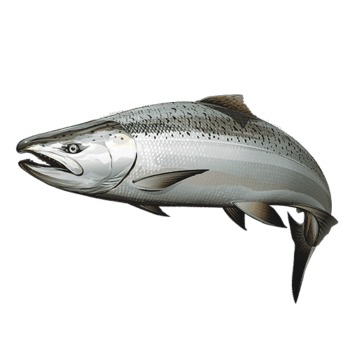



 Dams block access to historical spawning and rearing habitats. Downstream, dams alter the timing, frequency, duration, magnitude, and rate of change of flows decreasing habitat quality and survival.
Dams block access to historical spawning and rearing habitats. Downstream, dams alter the timing, frequency, duration, magnitude, and rate of change of flows decreasing habitat quality and survival.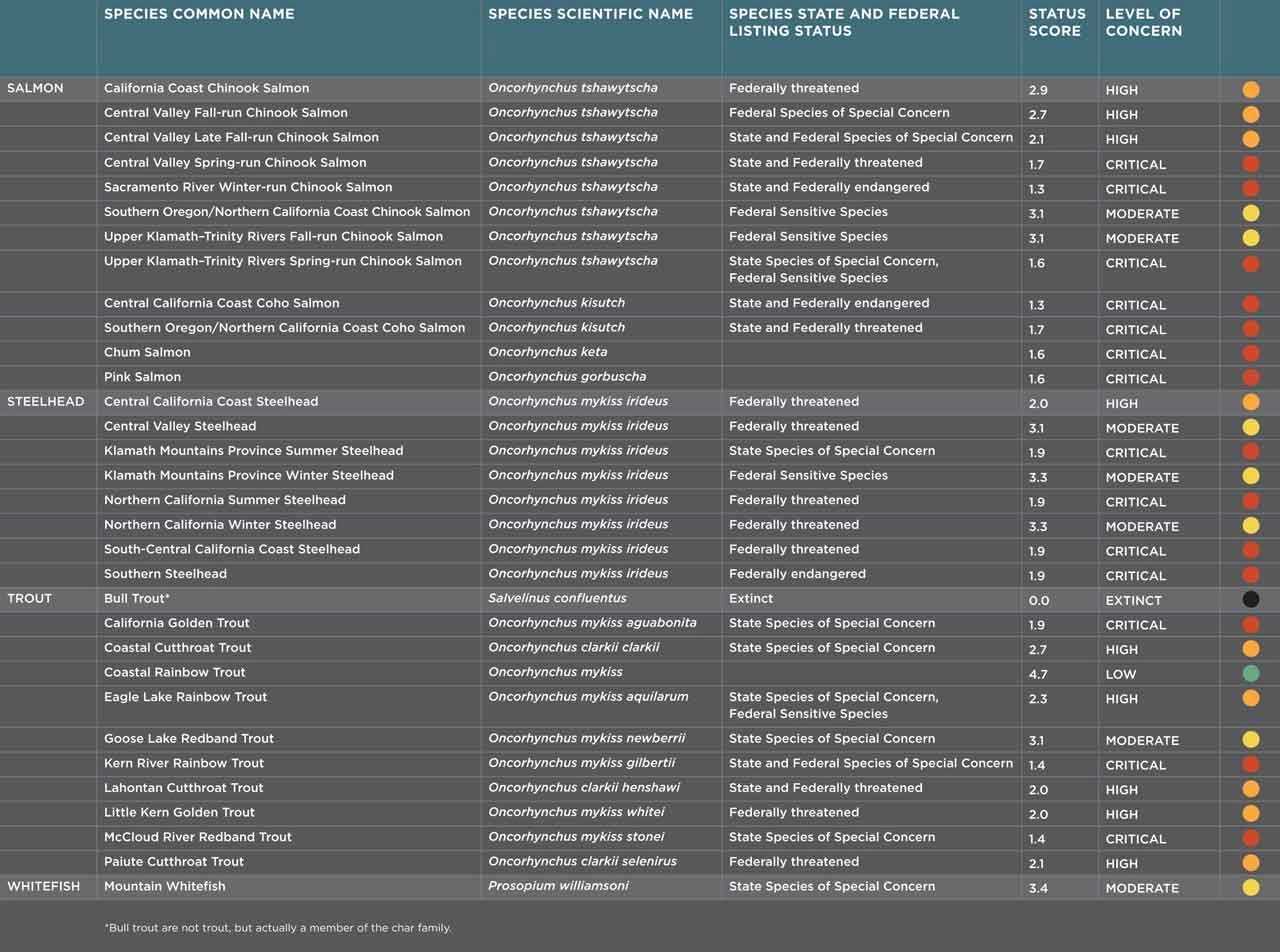
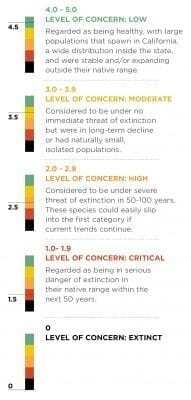

 Human use of streams, lakes, and surrounding watersheds for recreation has greatly increased with population expansion. Boating, swimming, angling, off-road vehicles, ski resorts, golf courses and other activities or land uses can negatively impact salmonid populations and their habitats. The impacts are generally minor; however, concentration of multiple activities in one region or time of year may have cumulative impacts.
Human use of streams, lakes, and surrounding watersheds for recreation has greatly increased with population expansion. Boating, swimming, angling, off-road vehicles, ski resorts, golf courses and other activities or land uses can negatively impact salmonid populations and their habitats. The impacts are generally minor; however, concentration of multiple activities in one region or time of year may have cumulative impacts.
